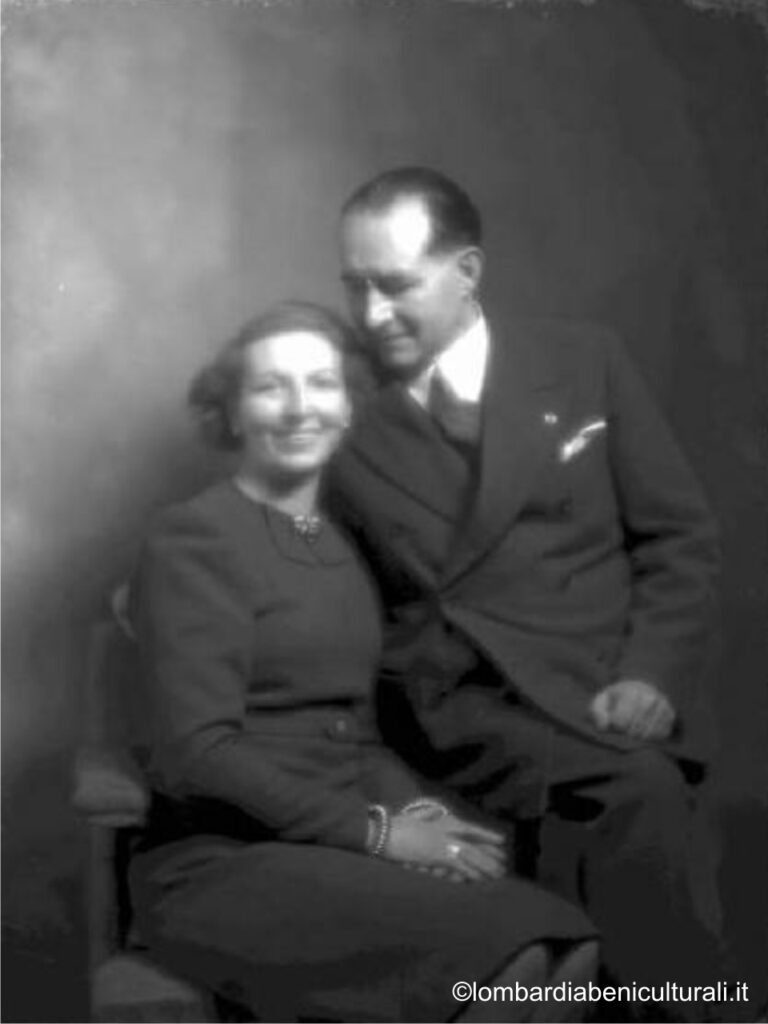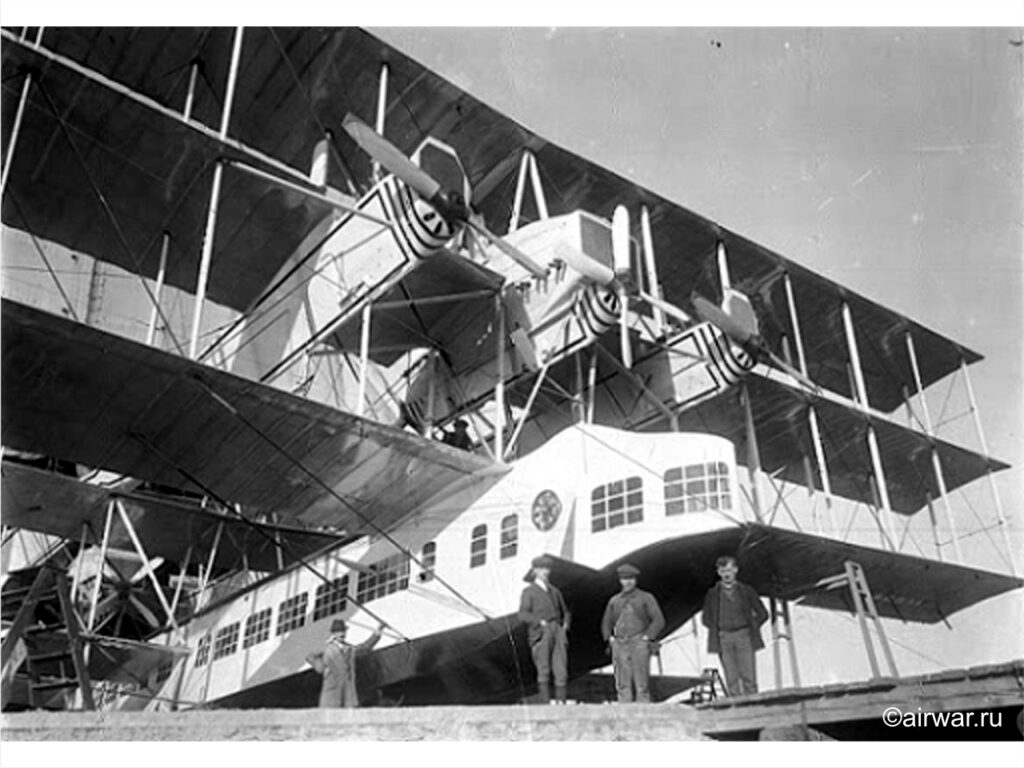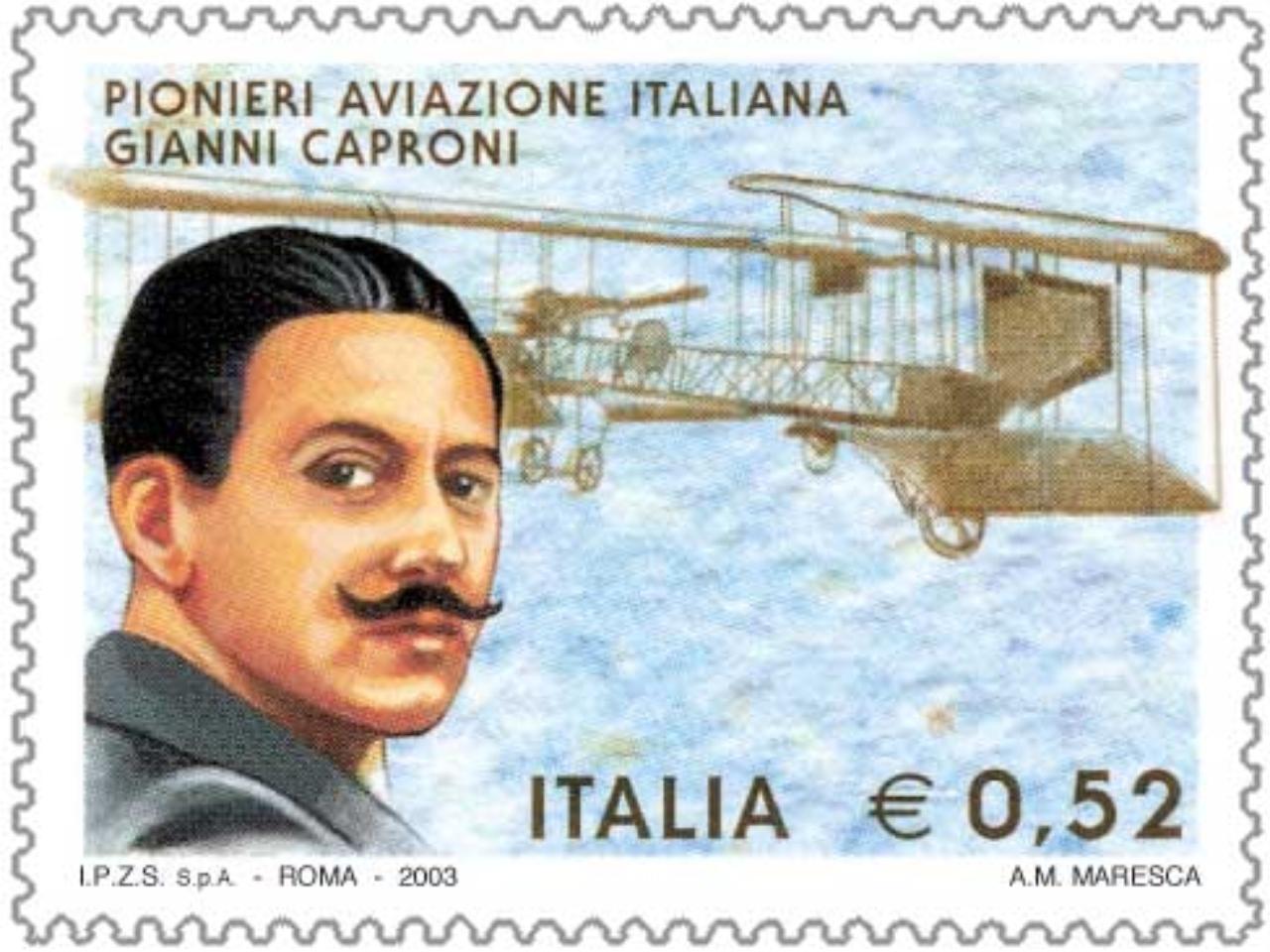Discover the life of Gianni Caproni as a testament to his planning ability, tenacity and the will to believe in the future of technology.
Once permission was obtained from the military state property, Caproni, his brother and the three workers occupied an abandoned farmhouse in Malpensa. A shed was built next to it and they developed an aircraft which, on 27 May 1910, made its first flight with on board Ugo Tabacchi, the man who was both the pilot and test pilot. This is the date which marks the moment when the name Cascina Malpensa began to make its mark on the aeronautical world. Upon landing, the aircraft was destroyed but the pilot was unharmed.
CA. 2
Caproni developed a second aircraft, modifying the propeller, which became a single propellor connected to the engine with dual power. The CA.2 was tested on August 12 of the same year with results similar to the first. At the end of 1910, the Military Engineers Forced the Capronis to abandon the land. In 1910, due to the need to find new capital, Caproni teamed up with an engineer from Bergamo named Agostino De Agostini, an industrialist with a solid economic position and a passion for flying, and they moved to the adjacent Vizzola Ticino.
Rosina Ferrario
At the end of the same year, the aviation school was also inaugurated which, in a short time, allowed 72 students to obtain their licence, including many foreigners, among which was the young woman from Milan, Rosina Ferrario, who in 1913 obtained the pilot license number 203. She was the first woman in Italy to get her pilot’s licence and the eighth in the world. With the birth of the Malpensa Flight School, it was necessary to build a spare logistics warehouse for the aircraft, and this was built in via Milano. The barracks, which closed in 2015, have today been transformed into a large Covid vaccination hub in Lombardy.
Between 1910 and 1911, five different types of biplanes were built and tested, with no good results. When Italy went to war with Libya in 1911, the Army had to buy its first eleven foreign-made aircraft, as no Italian aircraft were available. Numerous tests were carried out at the time, but the type of investments required were beyond the reach of impromptu builders. The following year, after the withdrawal of De Agostini, Caproni joined Mr. Carlo Comitti, and with the availability of increased funding, each new project was successfully tested, and 71 different models of airplanes were developed that set several world records in speed, height and distance in closed circuits, although no sales were procured.
CA. 8
However, Caproni’s aircraft began to gain international attention, especially in June 1912 when the aviation week was held in Vienna, where Caproni participated with the CA.8, an event that attracted the attention of the engineer Luigi Faccaroni, a building contractor, with whom Caproni started a new company the same year, after abandoning Comitti. With this third company, they broke the world record for passenger flights, initially covering 200 km at an average speed of 103 km/h, and 250 km at an average speed of 104 km/h. Furthermore, they flew from Milan to Rome in various stages in 1913.
CA. 18
The military were the only customers who could develop aviation on an industrial basis as civil aviation was only for very few enthusiasts or wealthy landowners, and with the imminent outbreak of the First World War, the increase in investments allowed manufacturers to design and experiment with new models. Knowing about the forthcoming tender announced by the Army for the supply of Bristol 80 type aircraft, Caproni participated and won with the CA.18 model, winning an initial order of 12 aircraft incorporating some modifications in collaboration with the parent company Bristol. Once finished, the planes went through checks and tests and were rejected. Caproni found himself with 12 aircraft that he had built and paid for in advance that the Army was not willing to accept and pay for.
As a result, the third contractor also abandoned the project, and the piloting school was closed. The army offered to take over the workshops and to hire Caproni himself, making him technical manager. At the head of the Army aviator battalion, established in 1912, was Giulio Douhet, one of the world’s leading theorists of the military use of aircraft, who helped achieve a productive turning point. Caproni therefore abandoned civil aviation and dedicated himself to an absolutely revolutionary project.
CA.30
The first true bomber ever conceived of in history, a tri-motor biplane bomber of enormous dimensions. Due to the request for technical modifications and the lack of authorization for the construction, Caproni found himself with a new aircraft project but was unable to carry it out; he decided to take over the direct management of the construction of his aircraft through a notary friend from Milan and a group of figures from the worlds of Lombardy’s culture and high finance, setting up a new cooperative company with unlimited capital.
CA. 31
Furthermore, through important contacts in the Army, at the end of 1914, the new company closed a contract for the construction of the first 12 CA.31 bombers, a derivation of the AC. 30, for the production of which new factories were built on the outskirts of Milan in an area called “Cascina Taliedo”, intended to house the International Air Circuit, where in 1910 Milan’s first airport was built. In the early 1920s, the first civil lines from Milan to Berlin and Rome were established, while the construction of Linate Airport began in the following decade. After the Second World War, the area was used for building and today there are two restored sheds reused as multi-purpose halls called Officine del Volo. www.officinedelvolo.it
With Eugenio Chiesa as Commissioner for Aviation, production went from 3,681 aircraft between fighters and bombers in 1917 to 6,488 aircraft in 1918. A dual-channel supply chain was established for aeronautical construction: on the one hand, the importance of the production of aircraft engines by Fiat grew, Fiat being the car manufacturer founded in Turin in 1899 which entered the field of aeronautics in order to differentiate investments and markets, and on the other, the design of Caproni who, in 1917, was commissioned to produce 100 CA.35 aircraft, 181 CA.36s, and CA.44 aircrafts that had a wing area of 150 square meters.
Aviation bombers
In 1918 there was a single Caproni program for aviation bombers and the CA.45 and CA.46 aircrafts were commissioned, and were produced under license by factories in France and the United States, while production of the CA.44 remained in Italy, engaging a chain of companies such as Breda, Piaggio, San Giorgio, Bastianelli and Officine di Savigano, and employing a total of 50,000 workers. Military aircraft were bought by countries all over the world, demonstrating the importance of the military air force.
In 1917, a document was sent by Caproni and Douhet to the US Army Air Service soliciting American support for the war in Europe. The following year, the first 20 American soldiers nicknamed “the Foggians” were sent to Foggia, in Puglia, who were trained on the Caproni CA.33s under the command of Fiorello La Guardia. At the end of 1918, about 2,300 workers were employed in the Taliedo workshops alone.
Timina Guasti
In the meantime, Caproni was also able to devote space to his affections, so much so that in 1916 he married Timina Guasti, daughter of the notary who helped him set up the last company, and with whom he went on to have eight children. After the marriage, he went to live in Milan in an apartment on the ground floor of the grandiose Durini palace, built in 1645 by the Durini counts of Monza, a building that he bought outright in 1925. Timina, as a great art lover, took care of the careful restoration and of some changes such as the construction of the terrace on the top floor making it one of the most iconic buildings in Milan.
Her passion for art and flying led her to found the Gianni Caproni Aeronautical Museum in 1929, to chronicle the technical and entrepreneurial story of her husband Gianni, an activity that she carried on throughout her life along with her children, collecting all kinds of flight-related memorabilia, documents and artwork. In fact, this is the oldest aviation-themed museum in Italy. Its first location was in Taliedo, then, at the end of World War II, it moved to Venegono Superiore, in the Varese area, then it reopened in Vizzola in the 1960s, up to the final location in Trento in the 1980s. In the photo is the couple photographed by Emilio Sommariva in the early 1940s.

With the end of the war in November 1918, there was naturally a sudden drop in orders which was also due to the government’s decision to dismantle the military aviation sector. Technical and specialized personnel were dismissed en masse, airports closed to traffic, all the technical material sold off as war surplus, and lastly, the airplanes on the fields were destroyed.
CA. 40
The first passenger aircraft designed by Caproni was a derivation of the CA.40, where the part intended for the transport of bombs was transformed into a cabin with benches for passengers along the sides. Unfortunately, in 2019 during a propaganda flight, the plane crashed causing the death of 17 people including journalists and photographers. Caproni investigated the causes until he found traces of the impact of a camera, which was probably dropped by a passenger, with a propeller.
CA. 60
Despite this hard blow, Caproni decided to continue designing, this time a large seaplane for 100 passengers with a long range and a higher flight altitude. He began the construction of the CA.60, photo boelow, also known as “Noviplano Transaereo”, with three groups of three wings and eight engines, which was the most visionary of all his projects. An expanse of water was chosen for take-off and landing due to lack of space in Italy to use as runways. The first successful flight was performed on February 9, 1921 over Lake Maggiore in Sant’Anna in Sesto Calende, and a second one on March 4.
Unfortunately, during the latter flight, the aircraft’s nose rose too quickly and the tail touched the water causing the vehicle to overturn, fortunately without harming the pilot. Despite this, the aircraft became an icon in the history of world civil aviation.

This was another very hard blow for Caproni also in consideration of the huge economic investment involved. The advent of fascism in 1922 gave a sudden impetus to the development of military aeronautics in peacetime, with the establishment in 1923 of the General Commissariat for Aeronautics, whose aim was to develop a system of collaboration and integration of skills among the various aeronautical industries. At the end of the 1920s, Caproni became an undisputed protagonist of Italian industry at the head of one of the largest industrial groups in the country.
CA. 90
The design of the CA.90, the largest land aircraft ever built at that time, and the Ca.100, the oldest tourist seaplane in the world, dates back to this period and gained great international fame. In the 1930s, the Campini-Caproni experimental aircraft, the first jet aircraft capable of flying significant distances, remained only a prototype due to the scarce technological capabilities of the time. With the acrobatic CA.161bis biplane, produced in 1936 and which reached a height of over 17,000 meters during a flight at Guidonia Airport in Rome, he set the world record which remained unbeaten until 1995.
Count of Taliedo
In 1940, Vittorio Emanuele III awarded him the noble title of Count of Taliedo, the location in the municipality of Milan. Over the following years, military orders were canceled by the peace treaty, there was a post-war economic crisis, a politically hostile environment and difficulty in obtaining financing, all of which led, in 1946, to a deep crisis for the whole group of companies which had around a total of 40,000 employees. Caproni also attempted to reconvert into other sectors: he created the 75cc “il Capriolo” motorcycle, which was produced for a few years, and the Cemsa Caprioni F.11 car, designed by Eng. Fessi and presented in 1947 at the Paris Auto Show. Only seven prototypes were made due to high costs and Fessi took over the project, creating the Lancia Falvia in 1969, which became the most successful and widespread high-end sedan in Italy.
THE END
This last failure wiped out all remaining resources, which, combined with the lack of public support, led, inevitably, to the companies declaring bankruptcy in the 1950s. He, who had always believed in the dream of mass civil aeronautics, a sector already experiencing strong growth overseas, now that the times were finally ripe, could not join due to lack of financial resources. Shortly after Caproni’s exit from the aviation industry, civil aviation underwent incredible growth with the first flight from London to Johannesburg of the DH.106 Comet jet with 42 people on board.
The industry was dominated for a long time by British and American companies until the birth, in 1969, of the Airbus consortium which Brough together several European countries, including Italy. Caproni tried in every way to save all his companies by seeking funding abroad but without success. His visit to the USA to President Truman is famous, where on the wall he found a photo of Wright alongside his own. When Caproni, surprised, asked for an explanation, Truman replied: «I found them here. President Roosevelt left them up during the war, and I didn’t remove them. You are the creators of world aviation, and America honors you for that.»
Return to economic tradition
